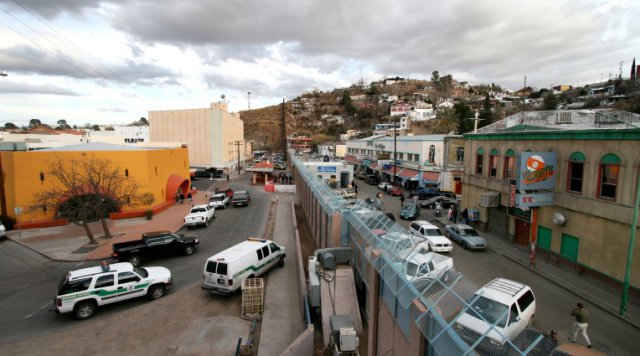Department of Homeland Security researchers are spearheading a push to better protect the nation’s coasts and borders by consolidating research efforts and standardizing unmanned operations between two of its agencies.
Threats from technologically adept “bad guys” and the challenges posed by very small aircraft like the gyrocopter protester Doug Hughes landed on the White House lawn and a quadcopter that crashed there just months earlier, are consuming greater attention at DHS, said Timothy Bennett, a program manager in the department’s Science and Technology Directorate (S&T).
“There’s been a big push to increase our capabilities and our understanding of UAS systems,” said Bennett.
As a result, he said, DHS will combine two key testing programs and work to standardize and integrate the unmanned operations of Customs and Border Patrol (CBP) and the Coast Guard.
S&T plans to combine and expand its successful Robotic Aircraft for Public Safety (RAPS) and the Robotic Aircraft for Maritime Public Safety (RAMPS) programs. The move is intended, in part, to help the agency improve its own understanding of unmanned aerospace systems (UAS) as the usefulness of UAS becomes increasingly clear.
Under RAPS S&T researchers provide what amounts to consumer reports on specific aircraft for public safety agencies looking to buy UAS. During the first phase, called RAPS 1A, the directorate tested 25 different UAS from 15 different companies, providing evaluations to would-be buyers.
The next round of RAPS demonstrations will start January 11 at Fort Sill Oklahoma. Those tests will focus on testing UAS applications for border patrol, he said.
The RAMPS program, an offshoot of RAPS, provided similar reports for five unmanned systems, looking at their abilities in a maritime environment
“So you know for a maritime operation,” said Bennett, “this (aircraft) will find a man in the water, this will find speed boats—this will find whatever you happen to be looking for.” Bennett spoke to a Dec. 16 meeting at the Center for Strategic and International Studies (CSIS). The meeting was held to release the report Unmanned Systems in Homeland Security, a January report that was finally being released to the public by DHS.
The next phase, RAMPS 1B, begins in June and will expand its testing beyond the initial work done at Webster Field theNaval Air Station Patuxent River in St. Mary’s County, Md., to different US locations including in Alaska and Florida.
“If you’ve done enough with aircraft you find out that they do operate completely different if it’s really cold, high humidity—wherever it happens to be,” explained Bennett.
In the third phase called RAMPS 2, Bennett said DHS would reach out to other countries to see what can be learned and shared.
We’re going to work with NATO, Australia and other friendly countries, he said, “to see how we can work in terms of maritime, and hopefully border patrol, in terms of collaborating, putting our research dollars together to come up with better solutions for homeland security.”
In the future RAPS and PAMPS will shift their focus to the payloads over the platforms, said Bennett.
We’re going to start concentrating on sensors over aircraft, he said, “because the sensors are going to make or break us finding bad guys.”
S&T will be working to have both the Coast Guard and CPB adopt common data links and systems so they can communicate, and eventually common hardware and software. Bennett said that they would like to have common control systems and interfaces for payloads,
Among the problems the two agencies have been wrestling are jamming and spoofing by those trying to evade border monitoring.
“The bad guys are putting money into spoofing and jamming of GPS,” said Bennett, so we’re putting money into countering.
Several speakers also mentioned efforts to thwart the use of UAS by adversaries.
Countering UAS is a new array of work “that man people are working on in government, said Admiral James Loy, who formerly served as DHS Secretary and as commandant of the Coast Guard.
One of the tools that they Coast Guard is assessing, said Bennett, without providing a lot of details, is the use of tethered drones for long-term surveillance.
“What’s nice about that is because you run the tether off the ship, and run the power and the signal through the tether, “you can do 24/7,” said Bennett. “As long as the ship is moving you have operations. You can put them up to 1000 feet, 3,000 feet according to what your operation is,” said Bennett, “and do a constant stare on what’s out on the ocean.”
Source: Inside Unmanned Systems

